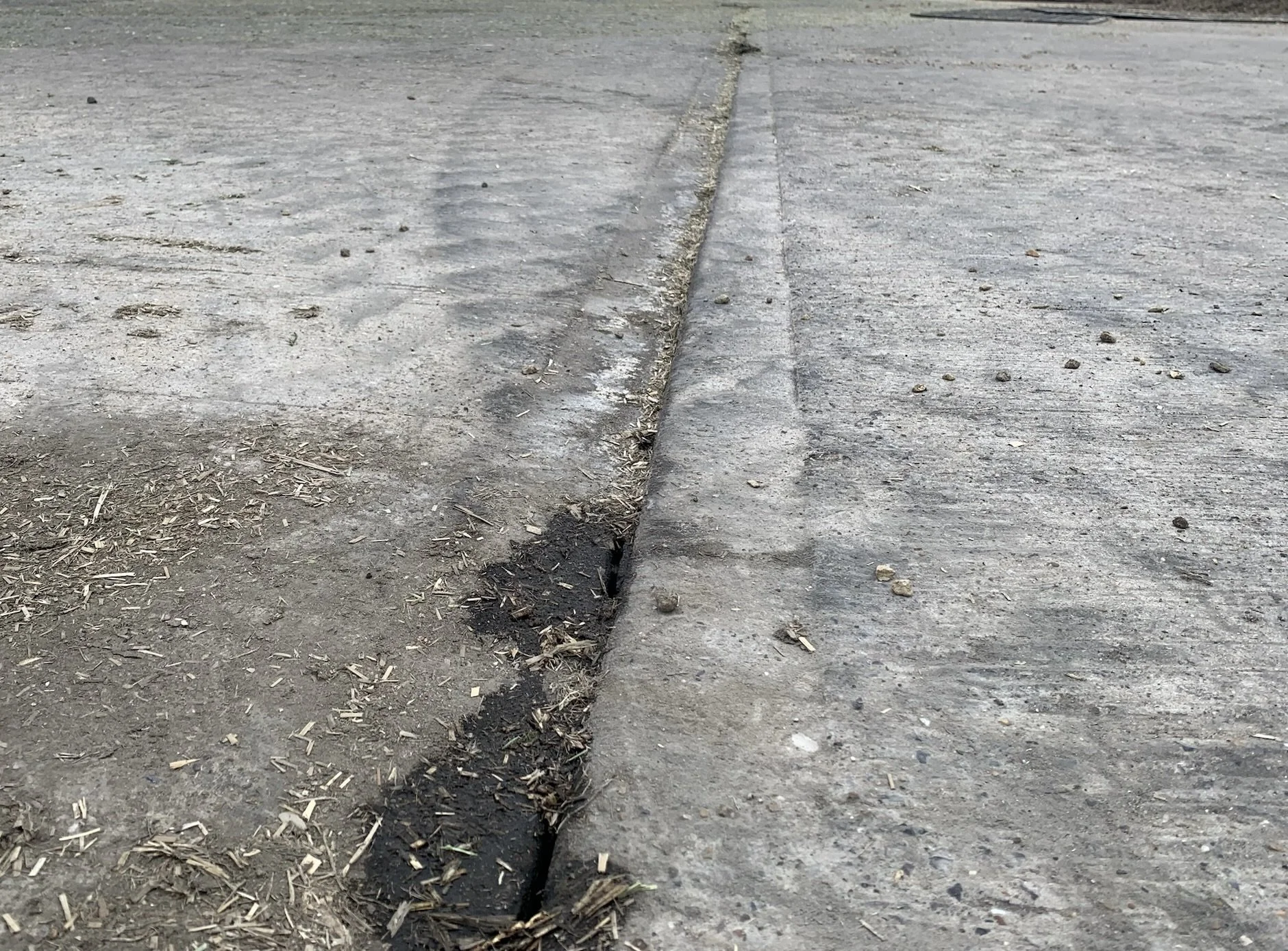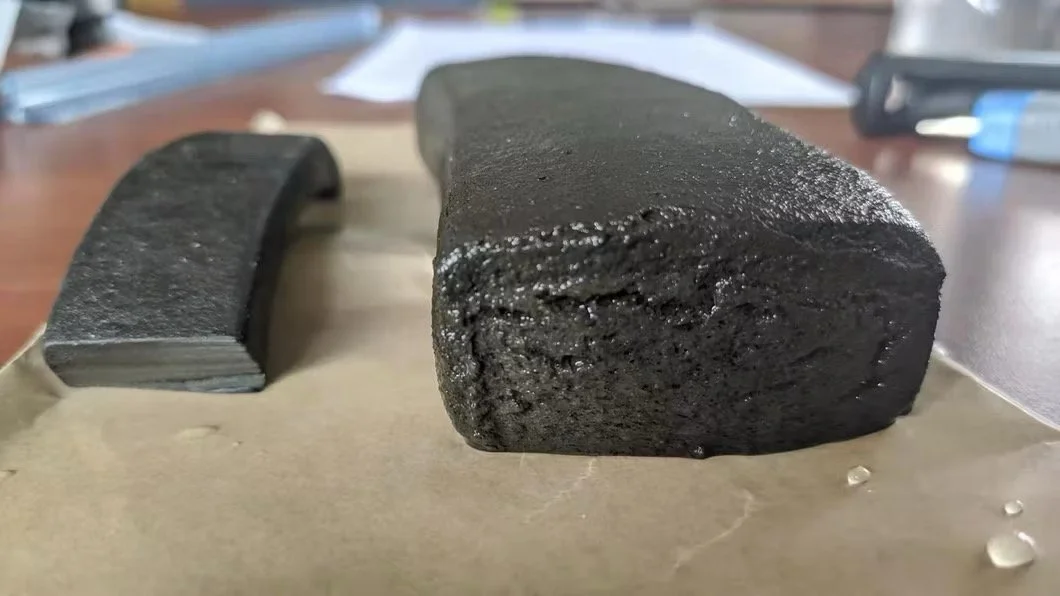How best to seal silage clamp floor joints?
Joints are always a problem, or so my granny used to say. Joints are always the weak link too, the bit that usually lets go - or lets you down. And it is always the joints in a concrete floor slab that will most likely be the weak point when it comes to pollution control in a silage clamp floor. Designing these joints - where they are, the spacing and their sealants is the really tricky bit to get right when detailing a silage clamp floor and it is hydrophilic swellable sealant that might just be your best friend here.
Sealing the floor joints is key to a compliant silage clamp
Silage clamp floor rules and regulations
The SSAFO regulations in the UK are designed to protect the environment from the pollution associated with silage effluent. Much of the substance of the regulations involves the floor of the silage clamp and how this must be “impermeable” and “formed of either hot rolled asphalt or concrete”. Now I’ve already got an issue with this, because I’m not sure it’s actually possible to form an impermeable floor from concrete or asphalt - but I think I understand what they are trying to say. But the SSAFO regulations are not much “help” when it comes to solving these problems.
For some “actual help” you might want to have a long read through the CIRIA C759F report because this actually does give you some ideas of how you might actually achieve this goal of clamp floor impermeability. If you can’t be bothered to read that, or even if you did struggle through it, you might want to find out why I think hydrophilic sealant could make the whole lot a whole load more simple.
Why is hydrophilic sealant a good idea?
To answer this, I think we need to know what is wrong with traditional joint sealant designs. Concrete floor joints exist to allow the concrete to expand and contract as the temperature changes. If you don’t put joints in, the concrete will make its own joints, or as we call them, cracks! So joints are good, but they have to be sealed to make a floor impermeable.
Traditionally we used to pour pitch, or modified bitumen into the joint gap to seal it…… but it didn’t! Once someone discovered that this didn’t really work, they invented the “water bar”. That’s not a drinking den for tea totalers, but a rigid strip of plastic that is cast into both sides of the joint. You only have to look at the picture below to see that this is not something that’s easy to build. It’s difficult to position and hold in place and when you need to joint one strip to another, you need to plastic weld them together. It doesn’t even produce a “seal” but rather a barrier to flow!
Traditional waterbar solution
So a swellable hydrophilic waterstop has a low bar to clear and it does it by being easy to place and join and massively effective when it’s called on to stop a leak. This is all because it swells up to seal the gap when exposed to liquids. And it does so with some serious forces.
How does a hydrophilic sealant work?
The hydrophilic bit is the bit that “soaks up the water” and this is combined with a plastic or rubber that forms the strip. Sodium Bentonite clay is the traditional hydrophilic component in these strips and this is found naturally in several parts of the world. Alternatives such as modified polymers and plastics do the same job, and are more commonly used but lots of materials have been used - even a derivative of wheat flour!
Hydrophilic sealant can swell unto 300%
What’s really trick about these strips, is the forces they are able to produce to ensure a seal. Unrestricted (in the open air) the strips can expand 200% of their original size. This generates such force that it can literally break the concrete if it’s not buried deep enough in the joint. It needs to have around 75-80mm of concrete above it to avoid it blistering the concrete on the surface. And that’s enough to plug the joint of a concrete floor under even the highest silage clamp. Hydrophilic seals can stand a hydrostatic pressure of around 100 metres!
Do hydrophilic sealants last in silage effluent?
Yes I think they do, firstly because the chemistry says that they should last and also because I have been using them since the late 1980’s and I’ve never heard of one failing yet. Many of them now use basic polymers that once expanded, stay expanded even through a dry period. They really are a fit and forget sealant. And fitting hydrophilic’s is so simple and tolerant of “less than ideal” situations.
Swellable sealant like Fosroc Supercast SW10 are very forgiving…
How do you build a silage clamp joint with hydrophilic waterstops?
My rule of thumb is belt, braces and a piece of string, because three chances is better than two.
So for a silage clamp floor joint its mastic sealant, hydrophilic strip and a plastic membrane. The membrane goes on the bottom across the whole floor slab and then you just pour the first concrete slab against the shutters. Once the shutters are removed, the hydrophilic strip is just fixed to all vertical edges of the joints, around half way up the thickness, making sure you have 75mm of cover. You can glue it with mastic or even nail it into position with a concrete nail. When one roll runs out you can just butt joint the next roll up to it. Once it’s in position, you then pour the next concrete slab.
A delay coating on the strip makes sure it doesn’t expand too early and bust the new concrete before it’s set. Once it’s all cured, the top of the joints need to be sealed with a mastic sealant as the final “piece of string”.
SikaSwell mastic is ideal to seal around columns
The stuff also comes in mastic form inside a tube. Although this is a more expensive way to use it, there are advantages as it’s easier to seal round difficult shapes like columns etc.
So why doesn’t everyone use swellable waterstops in silage clamp joints?
I don’t know the answer to this because so far, I haven’t found a good reason not to use them. Maybe the industry doesn't know about them, or maybe builders of silage clamps just hope the mastic will work and will keep working. It’s not even as if this stuff is very expensive, because it really isn’t. The only real disadvantage of this sort of product is that you only really get one chance to fit it. If you didn’t fix it when you were building the clamp, then you have missed your chance, so maybe think about it before it’s too late.
If you want to discuss how to design or construct the joints in a silage clamp or would like to discuss any other aspects covered in this series, contact me at jeremy@silageconsultant.co.uk




